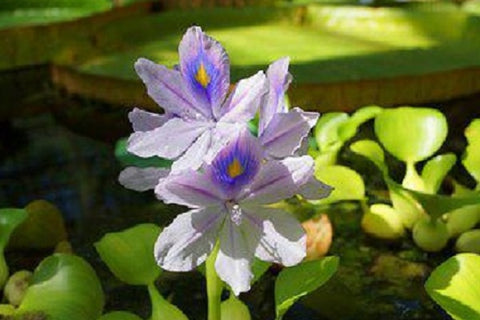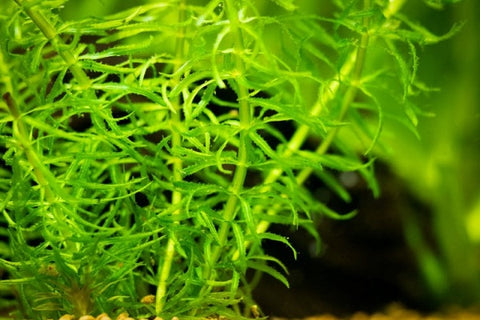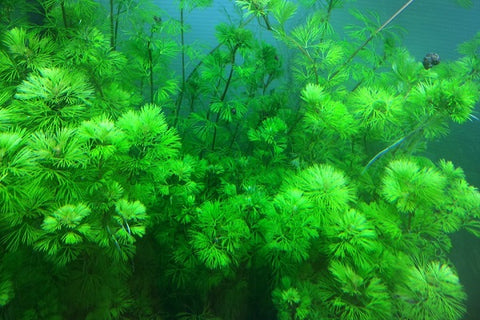Nitrates can be incredibly harmful to the health of your fish, especially if you aren’t aware of how high your nitrate levels are. You need some best plants to remove nitrates from your fish tank. In this article, you will read about these useful plants.
Best plants to remove nitrates
After you have selected an aquarium fish and are ready to set up the aquarium, it's also important to take steps to maintain the water quality in your fish tank. In addition to biological filters and chemical filtration media, plants can be an important way to remove nitrates from your fish tank, as well as reduce nitrate concentration over time by as much as 50%. There are several types of aquatic plants that will do this for you.
1. Water Hyacinth

This aquarium plant is easy to grow and proved as a useful plant to remove nitrates from fish tanks. Water hyacinth grows well in both saltwater and freshwater tanks, although it prefers shallow water so be sure that you don't over-plant your aquarium with these beauties.
If you have too many hyacinths in your tank, simply cut them down and place them on top of your filter as a replacement for carbon when it needs changing (or use them as fodder for a hungry fish). If your aquarium has soft lighting, be sure to trim back any dead leaves that may sink or decay to prevent algae from thriving off of them.
2. Water Lilly

The water lily is another one of the best plants for removing nitrates in your fish tank. Water lilies are easy to grow, they're available in different colors, and they make great centerpieces in your fish tank. Although it's not an aquatic plant, it grows directly in your fish tank (or fountain) with ease and gives off oxygen to your fish. This makes it a great option if you want something that adds beauty and removes nitrates at the same time.
I recommend getting a red or pink water lily because these varieties have been shown to remove more nitrates than other colors. Also, keep in mind that these plants need fertilizer added every two weeks or so; otherwise, they will start dying off! Finally, these plants need high light conditions and warm temperatures—ideal for tropical fish tanks but not ideal if you live somewhere cold.
3. Amazon Sword

The Amazon swords plants can be an excellent option against the nitrates in fish tanks. They only grow a few inches tall and need plenty of room to spread out. However, as they grow, you can use them as a backdrop for other smaller plants. When it comes time to trim, simply cut off a few leaves at a time—the plant will continue to thrive.
It's also worth noting that many varieties of Amazon swords have been bred to have variegated or colorful leaves. These varieties aren't necessary if you just want an effective way to remove nitrates from your tank, but they might add some flair if aesthetics are important to you.
And while they certainly look nice, they may not be ideal for beginner aquarists because of their delicate nature. You should probably stick with green varieties until you get more experience under your belt.
4. Anacharis

Anacharis can also be one of your tank's best allies in terms of eliminating nitrates. With proper care, this plant is especially effective at capturing nitrate and other chemicals before they make their way into your aquarium water. A 10-inch strand of anacharis will typically remove between 0.1 – 0.3 mg/L of nitrate every day; that means that every month, your plant can get rid of between 10-30 mg/L of nitrate.
Depending on how many plants you have in your tank, that could mean big improvements for your aquatic ecosystem. When choosing anacharis, opt for those with broad leaves instead of narrow ones. The more surface area available to absorb nitrates, after all, the better.
5. Cabomba

Often called fanwort, Cabombas are giant aquarium plants that don't need much direct sunlight. These plants do a great job at filtering nitrates in fish tanks.
One plant can clear about 15 gallons of water in a week!. Cabomba thrives when planted with other low-maintenance aquarium plants like Amazon swords and anubias. This is because these plants remove nutrients from the water, which means you'll have to fertilize less often.
You should also trim your Cabombas every month or so to keep them healthy. Be sure to cut off any dead leaves and yellowing stems as well. They usually grow between 6 inches and 2 feet tall. The thicker they get, the more work they will be for you. It's best to prune them once a month so they stay manageable. In short, Cabomba is one of the best plants to remove nitrates from fish tanks.
Why plants are important to remove nitrates from an aquarium?
The main reason why aquarium plants are important is that they remove or reduce nitrates, which can be harmful to fish. When nitrate builds up in an aquarium, it essentially suffocates fish by depriving them of oxygen. Plants remove nitrate and return life-giving oxygen into your water column. It's simple science: more plants mean less nitrate (and more oxygen).
Use good plant care practices such as trimming excess leaves or pruning after blooming and your plants will perform even better at removing nitrates from your aquarium. Just remember that you should never use live plants as fish food. You should also avoid overfeeding, which leads to higher levels of waste products like ammonia and nitrate. Your tank might not have enough beneficial bacteria to break down these toxic substances quickly enough, so use only what you need when feeding your fish.
Conclusion
Most aquarists agree that aquatic plants, when maintained properly, can benefit fish and invertebrates. Specifically, the best plants can remove nitrate from your aquarium. In nature, aquatic plants use nitrate as a source of nitrogen for growth. In an aquarium setting, excess nitrate is harmful to fish and other inhabitants. However, if there are enough plants in your aquarium, they will absorb some of that excess nitrate before it has a chance to build up to dangerous levels. This process is known as denitrification.
A sufficient number of aquatic plants in an aquarium will consume enough nitrate to keep it at safe levels for fish and invertebrates. That's why plant selection is important when choosing which species to include in your planted tank. Some plants are better than others at removing nitrate. It depends on how much light they receive, how fast their leaves grow, and whether or not they have any special adaptations for absorbing nutrients like ammonium or phosphate.


Comments (0)
Back to Aquarium Maintenance